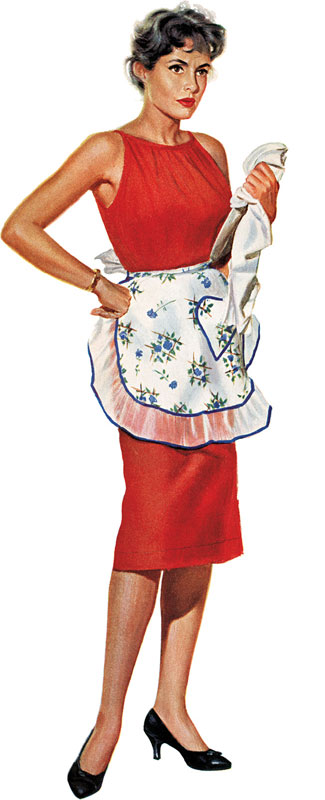
To see more classic Post covers featuring aprons, visit saturdayeveningpost.com/aprons.
The humble apron — created from a piece of cotton, muslin, a printed flour sack, or scraps of calico left over from making a quilt — can hold so many memories. The smell of freshly baked bread and lavender-scented laundry. A warm kitchen with Sunday dinner cooking in the oven. Childhood, family, and the coziness of home. Today, with the growing interest in cooking at home, crafting, and retro fashion, aprons are enjoying a resurgence in popularity. Large and serviceable or little and lacy, they are available in garden centers, haute epicurean shops, stylish specialty boutiques, and among the art books and postcards in gift shops of museums like The Metropolitan Museum of Art in New York and The Getty in Los Angeles. But … making your own is easy. Many baby boomer women will remember an apron as their first sewing project in high school home economics class.
“What was old is new again,” says Laura Corbett, who has been a designer at Simplicity Pattern Company for 27 years. Legacy sewing pattern companies (Simplicity, McCall’s, and Butterick) have begun reissuing apron patterns in a wide range of sizes from all eras, especially the 1940s and 1950s, that, in most cases, offer meticulous reproductions of vintage patterns down to the original instruction sheet “so people can have the authentic experience.”
Corbett attributes the recent popularity of aprons among young adults to social media communities like Cottagecore, which celebrates an idealized rural life, embracing a simpler, more sustainable lifestyle. Before COVID, it was an outlier. During the pandemic, everyone was suddenly planting vegetables, raising chickens, knitting afghans, learning to sew, and engaging in other grandma-inspired projects — most of which require an apron.
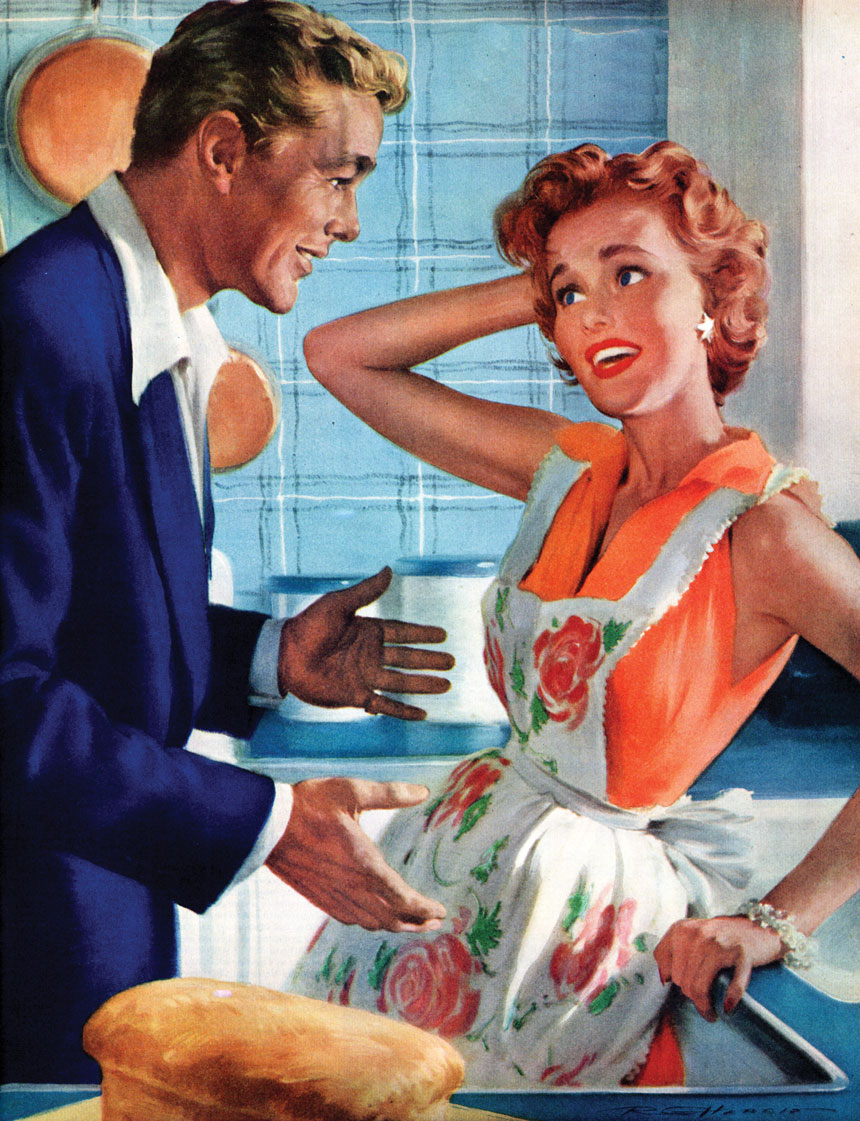
While apron patterns are a “steady seller,” Corbett says there’s always a surge before the holidays, when people are planning to spend more time in the kitchen. Because aprons are not complicated to make (even for beginners), she imagines that many are being sewn as handmade gifts. “It is a low-risk, high-reward project,” she says, “and you can add personal touches to make the aprons as plain or outrageously decorated as you want.”
To better understand the history and enduring popularity of aprons, we turned to EllynAnne Geisel — apron collector (at one time her collection numbered more than 600), book author, historian, and creator of Apron Chronicles, an exhibit that toured the United States for 16 years. She has always loved aprons and the domesticity they represent.
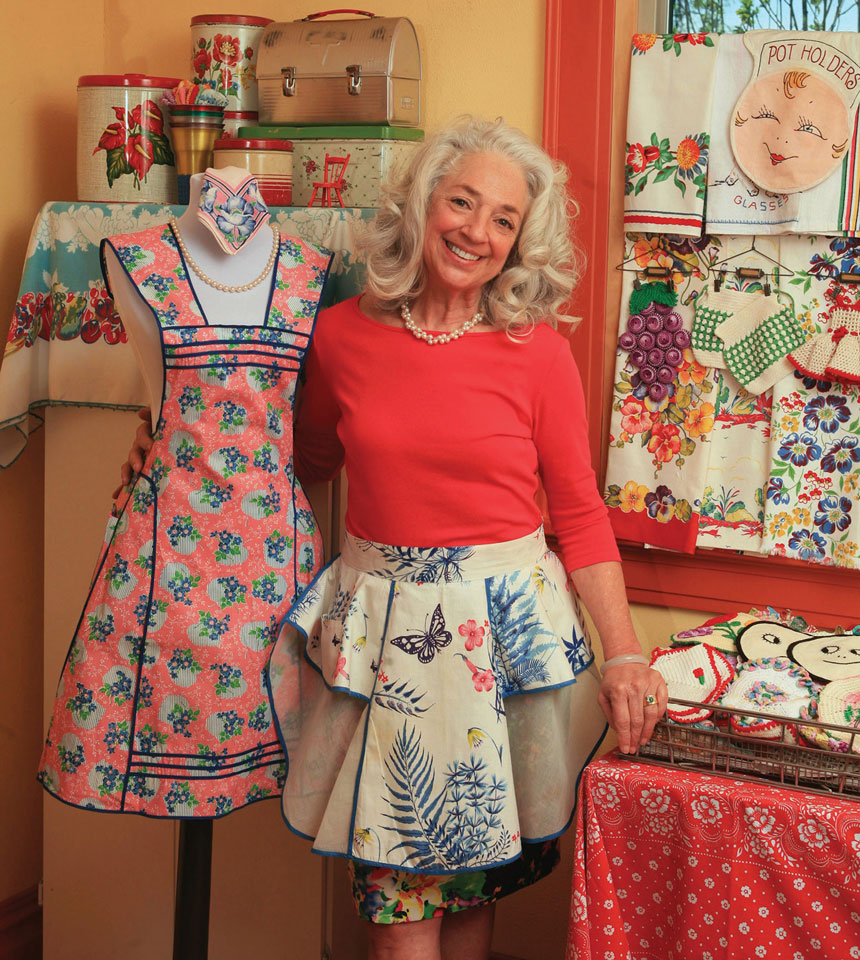
“Harriet Nelson was my idol when I was growing up,” says Geisel. “She was everything I wanted to be — a wife, a mother, and a homemaker.” She watched The Adventures of Ozzie and Harriet every week on television, taking note of how smartly Harriet dressed each day — the crisp shirtwaist dresses, the double-strand of pearls, the perfect apron — to stay at home and take care of her family.
“Domestic armor … that’s what aprons were once called,” she says. “You put one on and it protected you from the challenges of the day — from soapy splashes when bathing a child to the splatters of fresh-tomato spaghetti sauce.
“Early in the history of this country, women did the difficult work of homesteading right alongside the men,” says Geisel — who calls herself an “apron archaeologist” — adding that there wasn’t much a determined pioneer woman couldn’t do when she donned her apron armor.
“On a single day, an apron might wipe a child’s tears or the sweat off a brow, carry eggs and vegetables from the garden, wrap around the hands to remove a pan of hot biscuits from the oven, signal from the porch that supper was ready,” she says. “And, when everyone was gathered around the table, the pioneer woman flipped her sturdy, ankle-length apron to the ‘clean’ side before saying grace and serving dinner.”
Whatever its size and shape, every apron holds a story within it — from a pink organza apron from the flush-with-cash 1920s, to aprons sewn from flour sacks during the Great Depression, to masculine-themed aprons from the 1950s, when the rise of suburbia spawned the backyard barbecue.
Geisel’s collection began modestly. She visited thrift stores and jumble sales where she picked up an assortment of aprons — some stained and worn, others still quite beautiful, showing skilled needlecraft and embroidery. As she washed and ironed each apron, touching and smoothing the cloth, she felt a visceral connection to the apron’s previous wearer — to her spirit, her wisdom, her joy, and her heartache. As Geisel gathered up the laundry basket full of aprons, she knew she was holding something extraordinary — a basket full of stories.
“I took that basket everywhere,” she says. And she means everywhere — to the grocery store, to baseball games, to the hospital for her annual mammogram, to a friend’s home for a dinner party. “I was never without it,” she says. “I became ‘the apron lady.’”
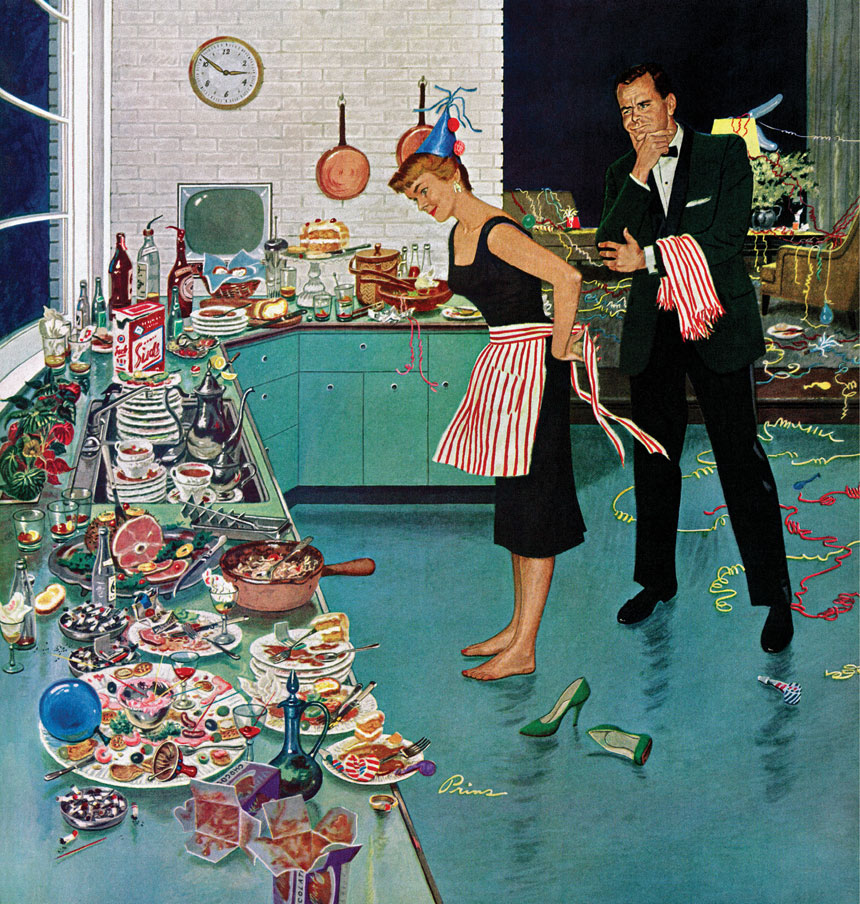
The basket was a magnet. In the pre-9/11 days, she carried a peach basket filled with aprons even when traveling. “It was small enough to fit into the overhead bin,” she says. “People … women and men … lined up in the aisle to tell me apron stories.”
The anecdotes flowed and she began writing them down. She became the collector and keeper of family stories, eventually publishing The Apron Book: Making, Wearing, and Sharing a Bit of Cloth and Comfort. Geisel came to understand that the stories were not just about the aprons, not just about pieces of cloth, but of the endurance, fortitude, gratitude, and optimism that they embodied.
The biggest surprise as she traveled around the country on her book-signing tour and with the Apron Chronicles exhibit was the number of young women interested in retro fashion and the vintage look who are making old-fashioned aprons cool again. “One of them told me something like, ‘I see it as looking over my shoulder and blowing a kiss to all the generations of women without whom I would not have these opportunities,’” says Geisel.
Elevating the humble apron to more than just protection from spills and splatters, in 2006 Geisel created Tie One On Day (an apron, of course!) as an annual opportunity to recognize the “giving” in Thanksgiving through an act of kindness. Celebrated on the Wednesday before Thanksgiving, participation is simple: wrap a homemade or store-bought offering (a pie, a loaf of bread, a jar of jam) in an apron, tuck in a handwritten note of encouragement, and deliver to a neighbor, co-worker, or women’s shelter.
“There is nothing that ties women together from one generation to another like the apron,” she says. “Fashions change but aprons remain.”
To find more information about Tie One On Day, visit apronmemories.com.
Irene Rawlings has written for Global Traveler, AFAR, O, the Oprah Magazine, and The Wall Street Journal, among other publications, and is the author of four books, including Sisters on the Fly.
This article is featured in the November/December 2023 issue of The Saturday Evening Post. Subscribe to the magazine for more art, inspiring stories, fiction, humor, and features from our archives.
Become a Saturday Evening Post member and enjoy unlimited access. Subscribe now
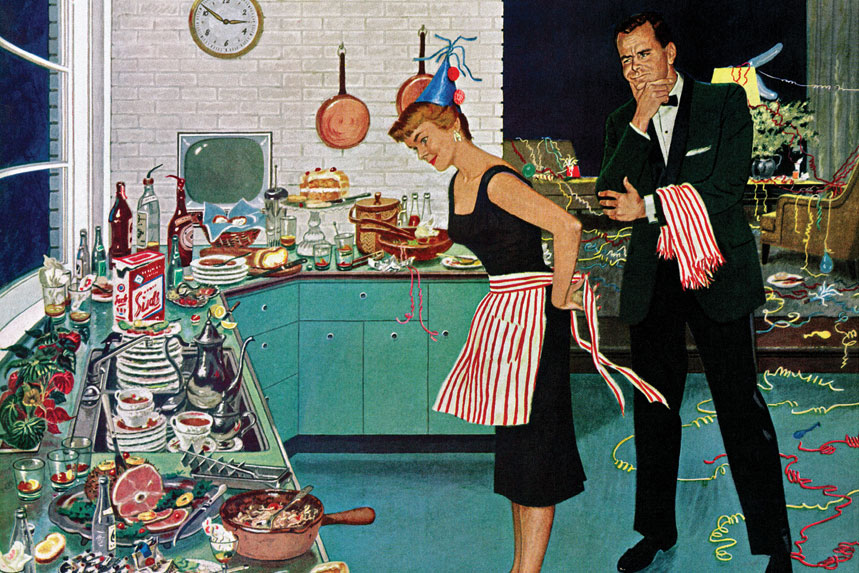



Comments
I’ve read, or tried to read the Saturday Evening Post every week since I was old enough look at the pictures and try to make head nor tail of what they said. Then when I discovered they actually said something that could change my world. That was back in 1945, and I’ve been an avid reader since then, and I owe a lot of it to magazines like Saturday Evening Post, Colliers, True, Argosy, (I was a boy, who loved to read.) Boy’s Life. and the list goes on. Then I discovered Science Fiction, Analog, Amazing Stories, and hundreds more. Needless to say without reading. even cereal boxes, I wouldn’t know the world I now live in as well as I do. I will read until my eyes fail me–my mind is unable to comprehend another sentence==and if there be a God, please don’t let me realize that my days of reading and loving the written word are at an end!